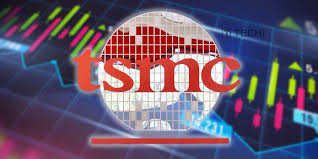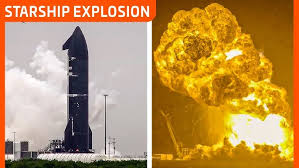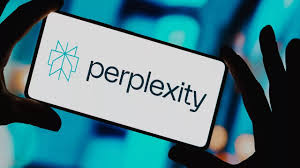Tesla’s Optimus Robots Bring the Future to Diners

Elon Musk, the visionary behind Tesla, recently announced that the company’s humanoid robot, Optimus, is stepping out of factories and into diners. These robots, already seen serving popcorn at Tesla’s new Diner and Supercharger in Hollywood, California, are set to transform how we experience dining. This move signals a bold leap toward automating hospitality with robots that can interact with customers in real-time. Let’s explore what this means, how Optimus works in diners, and why it’s a big deal for the future.
What Is the Optimus Robot?
Tesla’s Optimus is a humanoid robot designed to handle tasks that are repetitive, dangerous, or just plain boring for humans. Standing at 5 feet 8 inches and weighing about 125 pounds, it’s built to move like a person, with arms, legs, and hands that can grab objects. Optimus uses advanced artificial intelligence (AI), similar to what powers Tesla’s self-driving cars, to navigate spaces and respond to commands. Musk first introduced the idea in 2021, and now, in 2025, Optimus is becoming a reality in everyday settings like diners.
I remember visiting a busy diner last summer, where servers were rushing to keep up with orders. The idea of a robot like Optimus calmly handing out popcorn or drinks feels like something out of a sci-fi movie. Yet, it’s happening now, and it’s exciting to think about how this could make dining smoother and more fun.
How Optimus Works in Diners
At Tesla’s new Hollywood Diner, Optimus robots have been spotted serving popcorn to guests, including local first responders during a soft launch. These robots can respond to simple commands, like picking up a water bottle or snack when pointed to. They use AI to understand their surroundings and move without bumping into people or objects. While they’re not fully autonomous yet—some tasks rely on human operators—they’re a big step toward a future where robots handle routine service jobs.
Why It Matters
- Saves Time: Robots can work tirelessly, reducing wait times for customers.
- Fun Experience: A robot serving popcorn adds a futuristic vibe to dining.
- Testing Ground: Diners are a real-world space to improve Optimus’s skills.
Challenges to Overcome
- Human Touch: Robots lack the warmth of human servers, which some customers love.
- Technical Glitches: Overheating motors or limited battery life could cause issues.
- Cost Concerns: Early models are expensive, possibly costing $20,000–$30,000 each.
| Pros | Cons |
|---|---|
| Fast, consistent service | Lacks human connection |
| Handles repetitive tasks | High initial cost |
| Exciting for customers | Not fully autonomous yet |
External Link: Learn more about Optimus’s capabilities at Tesla’s official site.
Why Diners? A Smart Choice for Tesla
Choosing diners as a testing ground for Optimus is a clever move. Diners are busy, fast-paced environments where tasks like serving snacks or clearing tables are repetitive—perfect for robots. Tesla’s Hollywood Diner, with its 1950s-inspired vibe and roller-skating servers, is already a unique spot. Adding Optimus robots makes it a showcase for cutting-edge technology. This setting lets Tesla test how well Optimus interacts with people in a lively, public space.
When I was a kid, I loved watching servers balance trays at my local diner. Now, imagining a robot doing that feels both thrilling and a bit strange. It’s a sign of how fast technology is changing everyday places we know and love.
Real-World Testing
Diners give Tesla a chance to see how Optimus handles real customers. For example, at the Hollywood Diner, robots served popcorn to first responders, showing they can manage simple tasks in a crowded setting. This helps Tesla improve the robot’s AI and movements. It’s like a practice run before Optimus takes on bigger roles, like factory work or home chores.
Benefits for Diners
- Efficiency: Robots can serve snacks or drinks quickly, freeing up human staff.
- Attraction: A robot server draws curious customers, boosting business.
- Safety: Robots can handle hot or heavy items without risk of injury.
Potential Drawbacks
- Job Worries: Some fear robots could replace human servers, affecting jobs.
- Learning Curve: Customers may need time to get used to robot service.
- Reliability: Technical issues could disrupt service if not addressed.
| Opportunity | Challenge |
|---|---|
| Faster service | Job displacement concerns |
| Unique customer draw | Possible technical failures |
| Safer task handling | Customer adaptation needed |
Elon Musk’s Big Vision for Optimus
Elon Musk has big dreams for Optimus, calling it potentially “the biggest product ever.” He believes these robots could one day be worth more than Tesla’s car business. In 2025, Tesla aims to produce 5,000 to 10,000 Optimus robots, with plans to scale up to 50,000 in 2026. Musk even wants to send an Optimus to Mars by 2026 on a SpaceX rocket. His goal is to make robots affordable, targeting a price of $20,000 or less when produced at scale.
I once heard Musk speak at a conference, and his passion for pushing boundaries was infectious. His vision for Optimus isn’t just about diners—it’s about changing how we live and work. It’s a bold idea, but if anyone can pull it off, it’s probably Musk.
Production Goals
Tesla is already building Optimus robots at its Fremont, California factory. Musk hopes to have thousands working in Tesla’s factories by the end of 2025. The diner experiments are a stepping stone to bigger uses, like helping in homes or other businesses. However, challenges like overheating motors and battery life need solving first.
Musk’s Long-Term Plan
- Mass Production: Aims for millions of robots by the end of the decade.
- Affordability: Wants to lower costs to make robots accessible to all.
- Versatility: Plans for Optimus to do everything from chores to babysitting.
Hurdles Ahead
- Technical Issues: Recent reports mention delays due to hardware challenges.
- Skeptics: Some experts doubt Optimus can match Musk’s ambitious timeline.
- Ethics: Questions about robots replacing human jobs are growing.
| Goal | Obstacle |
|---|---|
| Millions of robots | Hardware redesign delays |
| Affordable pricing | High early production costs |
| Wide-ranging tasks | Limited autonomy currently |
External Link: Check out the latest on Tesla’s robotics at TechCrunch’s coverage.
What’s Next for Optimus in Diners?
The Hollywood Diner is just the start. Tesla plans to expand Optimus to more locations, refining its skills along the way. Imagine walking into your local diner and seeing a robot bring you a milkshake or clear your table. It’s not just about convenience—it’s about showing what robots can do in everyday life. Tesla is also working on making Optimus talk using Grok, its AI assistant, which could make interactions even smoother.
I can’t help but think of my favorite diner growing up, where the staff knew everyone’s name. A robot might not replace that charm, but it could make the place run like clockwork. It’s a balance between technology and tradition that Tesla is trying to strike.
Future Possibilities
- More Tasks: Optimus could take orders or serve full meals soon.
- Voice Interaction: Integration with Grok could let robots chat with customers.
- Expansion: More diners might adopt Optimus as Tesla scales production.
Concerns to Address
- Customer Comfort: Some may find robots less friendly than human servers.
- Cost: Diners need to afford robots, which are pricey for now.
- Reliability: Ensuring robots work flawlessly in busy settings is key.
| Future Potential | Current Limitation |
|---|---|
| Full meal service | Limited to simple tasks |
| Natural conversations | Relies on human operators |
| Wider diner use | High cost for businesses |
The Bigger Picture: Robots in Our Lives
Tesla’s push to bring Optimus into diners is more than a gimmick—it’s a glimpse into a future where robots are part of daily life. From serving popcorn to potentially cooking or cleaning, Optimus could change how businesses operate. But it also raises questions about jobs and how we interact with technology. Will robots make life easier, or will they make it feel less human? That’s the debate Tesla’s sparking.
Growing up, I watched movies where robots did everything for humans. Now, seeing Optimus in action feels like those stories coming to life. It’s exciting, but it also makes me wonder how we’ll keep the human touch in places like diners. Tesla’s journey with Optimus is just beginning, and it’s one worth watching.
Recent Post on X: “Tesla’s Optimus robot is now serving popcorn at the company’s new Diner and Supercharger location. And this is just the beginning. 🔥” – @iam_smx, July 20, 2025





